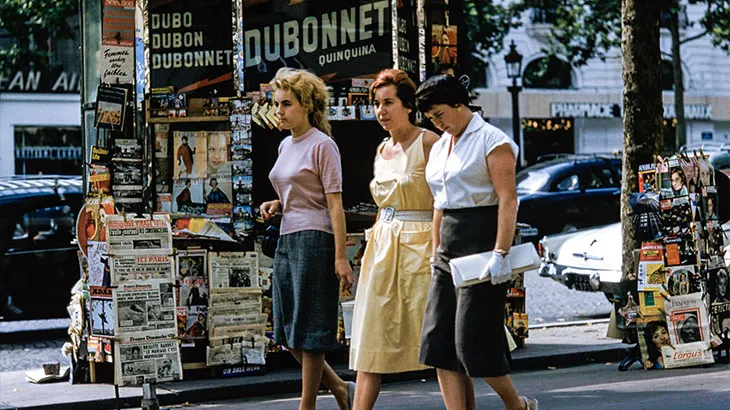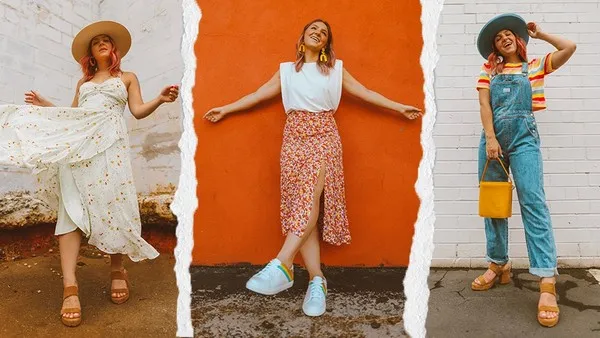Difference between vintage and retro fashion that are normally used together, yet they hold distinct meanings. Both designs invoke nostalgia and embrace trends from the past, although there are important characteristics that distinguish them different. Knowing the difference between vintage and retro will not only polish your style but also increase your reverence for each aesthetics’ different traits.
What Is Vintage Fashion?
Classic style connects with garments and adornments that were made before and have now become significant as per their age, quality, and importance in design history. To qualify as one of a kind, products typically should be no less than 20 to 100 years of age. Genuine rarity objects are not copies but rather genuine pieces from a past period, valued for their craftsmanship, particular plans, and the stories they hold.
Characteristics of Vintage Fashion

-
Mature: Genuine rare items are somewhere around 20 years of age.
-
Verifiable Importance: One of a kind things regularly represent the designs, social guidelines, and occasions of the period in which they were made.
-
Quality Craftsmanship: Numerous memorable items were fabricated with great materials and capable craftsmanship, adding to their life expectancy.
-
Exceptional Style: Classic design often includes explicit shapes, examples, and tones that were pervasive before yet are seldom produced now.
-
One of a kind design embraces various times, from the Thundering Twenties with its flapper outfits and craftsmanship deco themes, to the nonconformist patterns of the 1970s. Since every time has its singular look, purchasing classic permits you to have a piece of history while communicating your own style.
What Is Retro Fashion?
Retro design, not at all like rare, alludes to current dress that is made to copy or reproduce the style of an earlier time. "Retro" frequently relates to form roused by styles from the 1940s through the 1980s. Retro stage vintage and fashion things are regularly new clothing or embellishments that are intended to copy the appearance and feel of a previous period, in spite of the fact that they utilize current materials, creation processes, and at times contemporary translations.
Characteristics of Retro Fashion

-
Inspiration from the Past: Retro fashion incorporates design aspects from prior decades yet is manufactured in the present.
-
Contemporary Production: Unlike vintage, retro objects are not ancient; they are made to emulate bygone styles.
-
Accessibility: Retro things are frequently more economical and accessible than vintage, as they are commonly available and often cost less than real vintage antiques.
-
Nostalgic Appeal: Retro fashion evokes the look of a given era without forcing you to locate actual goods.
The Key Difference Between Vintage And Retro Fashion
1. Age and Authenticity
One of the most notable difference between vintage and retro fashion is the age of the objects. Vintage fashion incorporates unique pieces from prior decades, making them real antiques of their period. Retro fashion, however, is newly created apparel that draws influence from the past but is not really old.
For instance, a real 1960s little dress is considered vintage, yet a modern dress made to emulate 1960s designs is retro. Antique pieces provide an atmosphere of authenticity, while retro products appeal to individuals who appreciate antique styles but prefer current materials and workmanship.
2. Quality and Craftsmanship
Vintage objects frequently demonstrate workmanship that is unusual nowadays, with precise stitching, hand-sewn embellishments, and high-quality textiles. These traits add to the lifespan of antique objects and make them valued among collectors and fashion aficionados. Retro artifacts, being modern replicas, often lack the same degree of artistry and historical relevance, yet they provide the ease of current manufacturing processes.
3. Sustainability and Availability
The contrast between vintage and retro fashion is particularly obvious when it comes to sustainability and availability. Vintage fashion is naturally sustainable as it includes repurposing old products rather than making new ones. Wearing vintage lessens the need for rapid fashion and encourages the circular economy. Retro fashion, despite capturing the old style, is nevertheless part of the contemporary manufacturing cycle, meaning it may not necessarily accord with sustainable goals.
On the availability front, antique products are frequently tougher to obtain in specified sizes or conditions, making them special. Retro fashion, being recently created, is more easily accessible in a range of sizes and is generally less priced.
4. Styling Flexibility
With vintage, each item provides a bit of the past, delivering authenticity that shines out in every outfit. Retro fashion, while beautiful, is often interwoven into modern designs, making it easy to mix and match with contemporary wardrobe pieces.
For instance, a rare 1970s fancy shirt can be worn with high-waisted pants for an entire retro impact. A retro-enlivened extravagant pullover, then again, may effortlessly be coordinated with present day thin pants or a calfskin coat, making it simple to integrate into an ongoing closet without going completely rare.
How to Style Vintage Fashion

Styling antique apparel demands an eye for timeless pairings and a love for traditional aspects.
-
Mix Eras Thoughtfully: While real antique fans may prefer head-to-toe ensembles from a certain era, merging several decades may provide a distinct and current touch. Pair a vintage 1950s jacket with a 1970s flowery dress, for example, for a style that’s totally your own.
-
Focus on Statement items: Vintage fashion frequently features bold patterns and distinctive cuts, so select one or two statement items and construct your ensemble around them. This strategy allows you to display the old components without dominating your style.
-
Accessorize with Authenticity: Vintage accessories like purses, hats, and jewellery may boost your style and give even current clothing a vintage feel.
-
Prioritize Quality: Vintage clothes may be fragile, so select for pieces that have held up well over time. Avoid goods with excessive wear unless you’re competent at garment repair or prepared to embrace faults.
How to Style Retro Fashion

Retro fashion allows you to embody your favourite era without being limited by size, fit, or availability. Here are several ways to style vintage pieces:
-
Combine with Modern fundamenals: Retro-inspired pieces combine wonderfully with modern fundamentals, such as skinny jeans or leather jackets, which may maintain the entire look current and simple to wear.
-
Experiment with Patterns: Retro fashion typically contains playful designs like polka dots, stripes, or geometric forms. Try adding a retro-patterned top or dress to a neutral ensemble to give a feeling of nostalgia.
-
Accessorize with Retro Flair: Accessories like big sunglasses, cat-eye frames, and colourful scarves may quickly give your ensemble a retro vibe. These aspects work well with a range of modern designs, making it easy to adapt vintage trends.
-
Colour Blocking: Retro fashions, especially from the 1960s and 1970s, typically used strong colours and contrasting tones. Experiment with colour blocking to replicate the old mood in a modern approach.
Why People Love Both Vintage and Retro Fashion
The difference between vintage and retro fashion rests in their capacity to bring history, nostalgia, and personality into the realm of style. Vintage artefacts allow individuals to connect with the past, wearing objects that tell a narrative and conjure memories of previous periods. Retro fashion, meanwhile, makes it easy to reproduce the appearance and feel of prior decades without having to seek for unusual goods.
With both classic and retro style, you can find recent fads, explore different avenues regarding different periods, and show your personality such that feels valid and ageless. Understanding the contrast among rare and retro stage vintage and fashion design might make the way for a universe of style decisions that honour the past while permitting you to foster your own particular appearance.
Conclusion
In summary, the distinction between vintage and retro fashion rests in the age and authenticity of the objects. Vintage fashion comprises of genuine pieces from earlier decades, appreciated for its quality, craftsmanship, and historical value. Retro fashion, on the other hand, is newly created apparel that captures the essence of a prior age, allowing you to adapt historical trends in a current, accessible way.
FAQ’s: Difference Between Vintage And Retro Fashion
How old does attire require to be to be vintage?
A commonly acknowledged industry guideline is that objects manufactured between 20 and 100 years ago are labelled "vintage" if they clearly reflect the fashions and patterns of the era they represent. These clothing pieces come with a feeling of history tied to them, which is one of the reasons they are treasured by vintage fans.
What defines if clothes is vintage?
Typically, clothing is labelled vintage if it's at least 20 years old, however certain collectors and specialists may have tighter standards.
Where do antique garments originate from?
Most of the time it starts articles of clothes individuals no longer desire, which are either donated or trashed. A tiny fraction of these abandoned products find up in charity stores, but the great majority are transferred to third world nations (in Africa and Asia). From here they are sorted into bales of various value.
